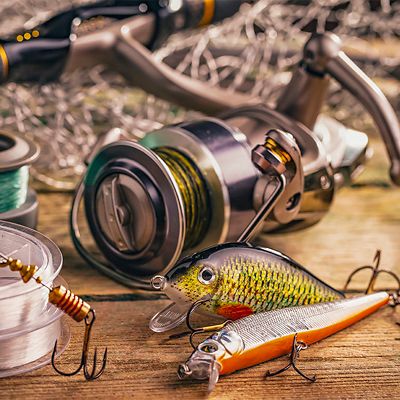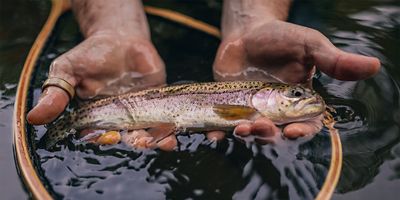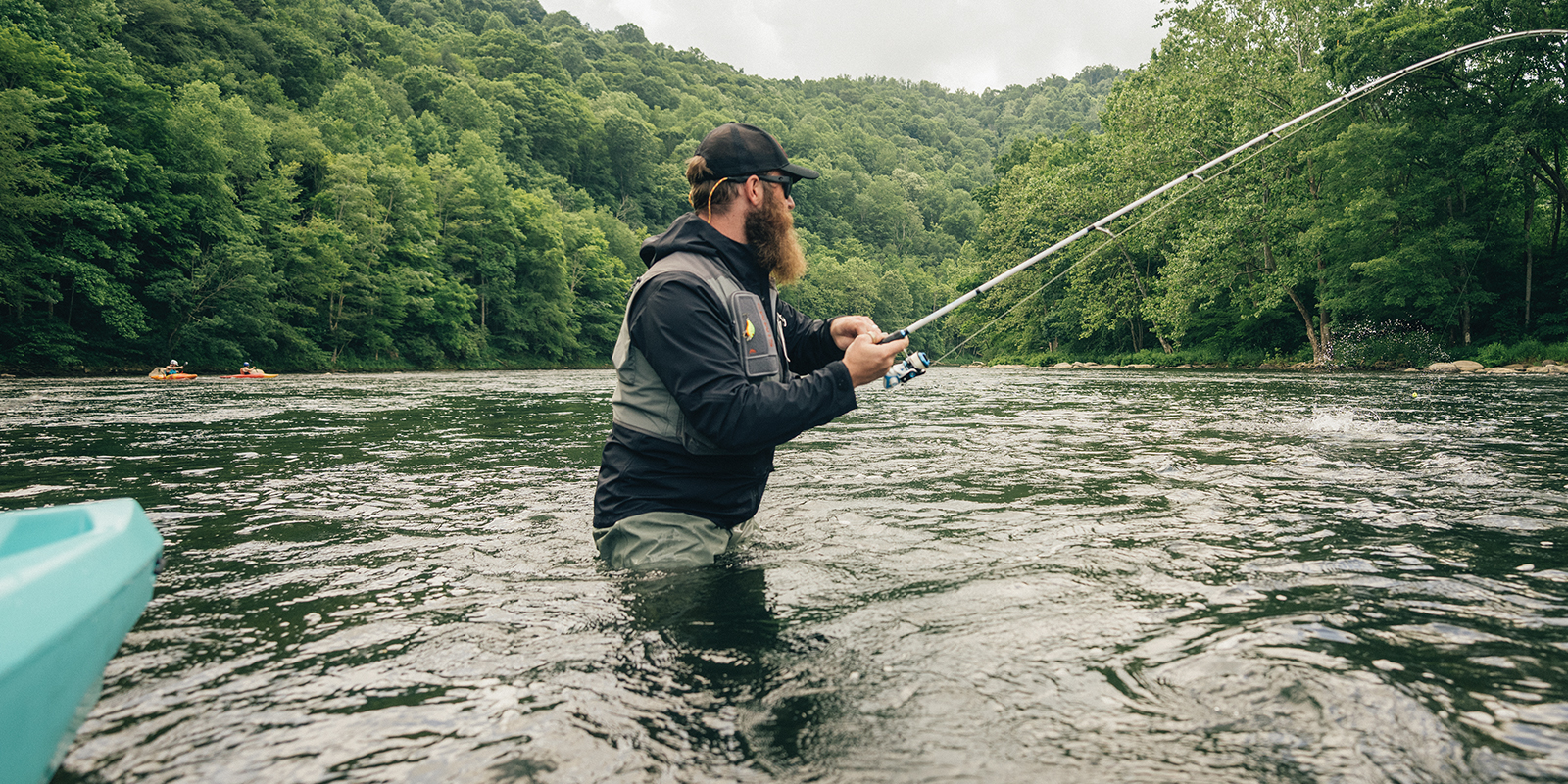Learning how to “read a river”—understand what’s going on beneath its surface and where you’re likely to find fish—is one of the most important lessons in fly fishing. With fast-moving currents and complex hydraulics, river fishing can be challenging, but the rewards are great, too. There’s nothing like identifying where the river trout are and pulling one out. Here’s how.
Get Equipped
The best rod length can vary by river, but in general you want something in between a lake rod (longer, for distant casts) and a small stream rod (shorter, for tight spaces). For average rivers, a 9-foot-6-inch, 5-weight rod will fit the bill. Match your leader to the size fly you plan on fishing, but consider going with something a little longer for potentially picky fish. Dry flies, nymphs, and streamers will all work on rivers depending on the time of year and current hatch. A dry-dropper setup where you tie a nymph to the end of your line and a dry fly slightly higher is a great technique in rivers where you’re not entirely sure what will work, and allows you to give both flies a try simultaneously.
Also, waders are a must, especially in colder, deeper rivers. Fish habitat is not always close to the banks and you want to be able to fish for hours without risking hypothermia.
Read the River
To read a river, you want to think like a fish. Like any animal, fish want an easy meal. A river fish doesn’t want to fight a strong current, which is hard work, but it needs the current to deliver food.
Look for seams, where two currents meet. When faster water meets slower water, it creates a perfect lane for feeding fish. Seams cam look like a subtle line on the water’s surface, and can be created by places like the back sides of rocks or boulders, the outer bends (where current typically moves faster), vegetation or cut banks, and solid debris in the water.
Eddies are found where fast water swirls and changes direction, creating a spot that traps insects for waiting fish. Look for bubbles on the surface.
Riffles form in shallow spots where fast water flows over rocks. If there’s deeper water just downstream of a riffle, where the water slows and forms a pool, fish like to wait there for insects to float by.
Tip: Consider fishing the tailwaters below dams. Dams often release the cold, oxygenated upstream water out into a tailwater, which makes an ideal trout habitat.





